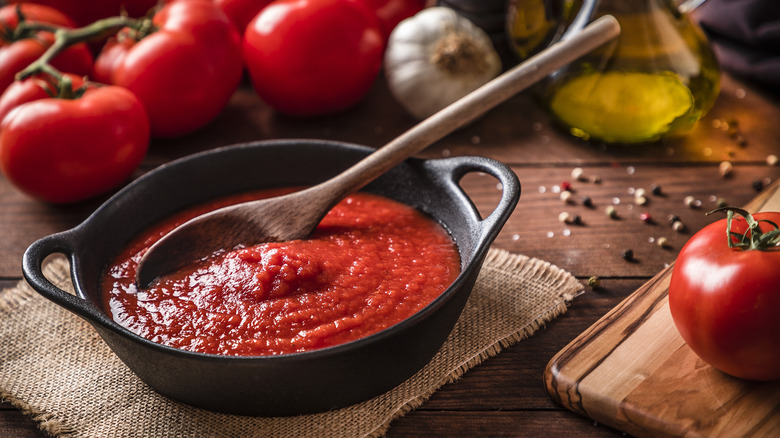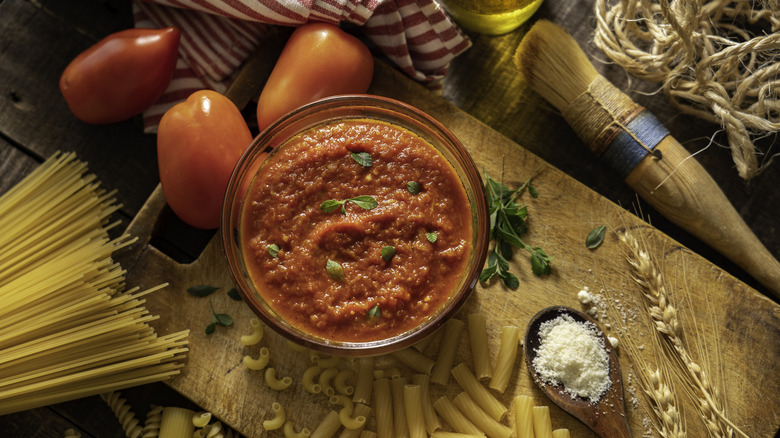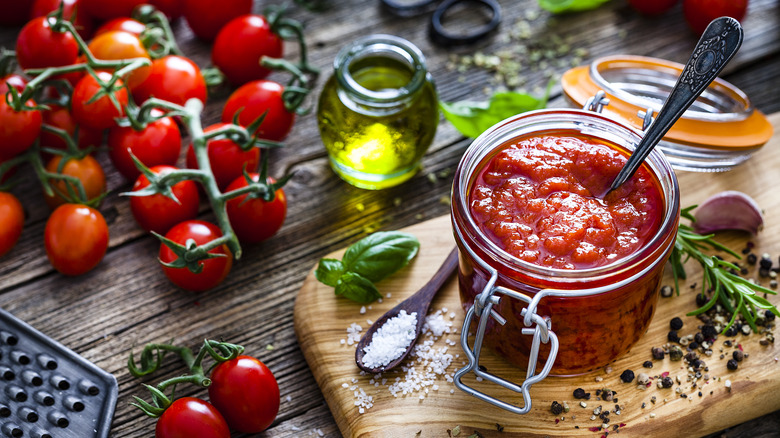Upgrade Store-Bought Tomato Sauce Without Adding Any Ingredients
Store-bought tomato sauce doesn't exactly have the same reputation as that homemade, simmered-for-hours kind that you can make yourself. But when you're in a time crunch or just don't want to put forth the effort to make it by hand, store-bought will do just fine — even celebrity chef Ina Garten keeps a jar in her pantry at all times. But if you want to take that grocery store sauce up a notch, then you don't actually have to add any more ingredients. You just need a pot and a stove.
For richer, deeper flavor from your bargain-brand sauce, let it simmer. Reducing the sauce helps concentrate the flavors, giving you more in every bite. But when it comes to choosing the right store-bought sauce, there are things to look for to get the best-quality jar. Keep an eye on the label and ingredients list to know a little more before you buy.
Simmer your sauce to bring out its flavor
Of course, the main ingredient in tomato sauce is, well, tomatoes. Like many vegetables, these are mostly water — about 95%. When sauce is simmered over heat, that water slowly evaporates out, causing the flavors of the tomatoes (and other ingredients within the sauce) to become more concentrated. As a result, the sauce develops a deeper, more distinct taste. If you purchase store-bought sauce and find that it's a little bland, try simmering it on low heat for a while to let it reduce, then do a taste test to ensure it's reached that flavor you're looking for.
Store-bought tomato sauces can vary in their sugar and salt content, which also impacts flavor. Salt brings out flavor in a dish, while a dash of sugar adds contrast to the tomatoes' acidity. If you're looking to get the most out of a store-bought sauce, avoid low sugar or low-sodium alternatives for the purpose of flavor because the absence of these ingredients could make them a little bland.
How to find the best quality store-bought sauce
The sauce aisle at any grocery store can often be overwhelming, and the most expensive sauce isn't always the best. While better-quality ingredients might have a slightly higher price tag, it's important to look at the sauce's label and ingredient list when searching for a quality sauce. If it's made from ingredients that you're familiar with, such as roma or plum tomatoes, vegetables like onions and garlic, and seasonings like oregano and salt, and it lacks those hard-to-pronounce preservatives and additives, it's likely of good quality.
Another thing to watch out for is the sauce's sugar content and how it's sweetened. It's common for tomato sauce to be sweetened with sugar, but watch for ingredients like high-fructose corn syrup. Plus, check the label to see if it's made with oil — if so, you want it to contain extra virgin olive oil. Of course, everyone has different preferences, so you might have to do a little trial and error with trying different sauces to know which one is best for you.


